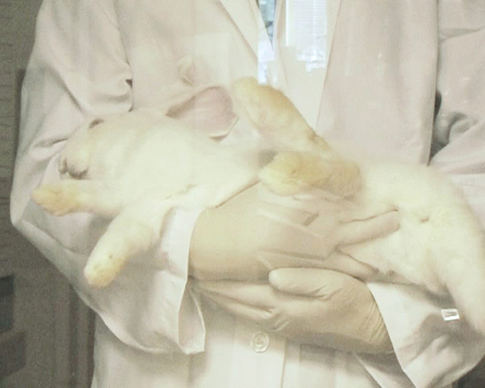
Wie der tote Hase dem toten Beuys den Menschen erklärt, 2004
In her video-work Wie der tote Hase dem toten Beuys den Menschen erklärt [How the dead Hare explains Human Beings to the dead Beuys] Dorcas Müller refers to the action Wie man dem toten Hasen die Bilder erklärt [How you explain Pictures to a dead Hare] (1965) by Josef Beuys. With a dead hare on his arm, he went through a Düsseldorf gallery from object to object, in order to explain these to the hare, and so makes it into a medium of understanding pictures and of intellectual catharsis. Dorcas Müller's video installation shows the animal as the object of performative-academic ordering-as-experiment: whilst the dead hare in the laboratory is shown a picture of Beuys, a neurochip on the animal's cornea registers the optical data and transforms them into a bar code. The hare's eye reacting reflexively becomes a nexus between life and death.
Dorcas Müller, * 1973 in Reutlingen (D), lives and works in Karlsruhe (D)
 Dorcas Müller, Wie der tote Hase dem toten Beuys den Menschen erklärt, 2004 Dorcas Müller, Wie der tote Hase dem toten Beuys den Menschen erklärt, 2004
3-channel video installation (colour, sound)
4:30 min., loop
courtesy Dorcas Müller
VG Bild-Kunst, Bonn 2008
|
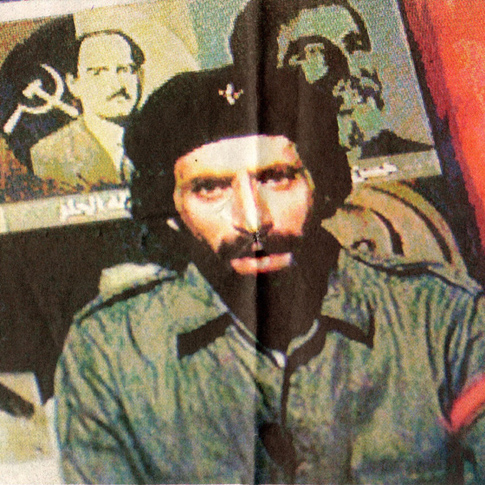
On Three Posters. Reflections on a video-performance, 2006
In this video commentary, the performance artist Rabih Mroué depicts how a video confession by a Lebanese resistance fighter, killed in 1985 on one of the first suicide attacks on the Israeli occupiers of South Lebanon, came about. The chance discovery of the video material shows that the freedom fighter had tried, like an actor, to depict himself in various versions as one already dead and a martyr. This inspired Mroué and the Lebanese historian Elias Khoury to analyse, which artistic and political aspects intersect in the production of such a video. In addition, they look into the question of why such a document, which was developed originally in a secular struggle for freedom, could establish itself as the Islamist strategy of the Hisbollah.
Rabih Mroué, * 1967 Beirut (RL), lives and works in Beirut (RL)
 Rabih Mroué, On Three Posters. Reflections on a video-performance, 2006 Rabih Mroué, On Three Posters. Reflections on a video-performance, 2006
(Rabih Mroué/Elias Khoury: Three Posters. Ayloul Festival, Beirut 2000)
video (colour, sound), 18 min.
courtesy of Sfeir-Semler Gallery
photo: Lina Gheibeh
|
|
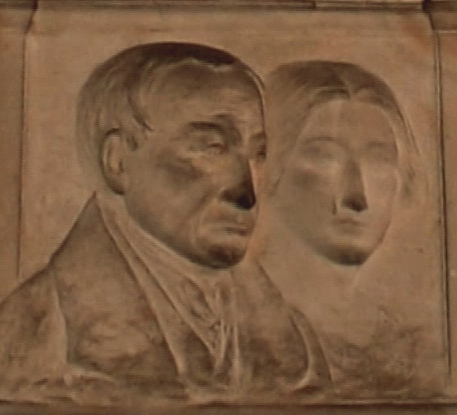
Igreja Positivista, 2008
Auguste Comte (1798–1857) was a French mathematician and philosopher. The positivist philosophy he founded was marked by a quasi-religious faith in scientific discovery and progress. Comte's motto "Love as principle, order as foundation, progress as goal" still exists in a shortened form "Order and Progress" on the Brazilian flag today. The video work Igreja Positivista documents the interior of a temple of the positivist church in Rio de Janeiro, which was founded on Comte's teachings. In it, the abandoned church building comes across like a mausoleum for the project of an "atheistic Catholicism," whose core consists of love, compassion and respect for human achievements.
Florian Meyer, * 1976, Berlin (D), lives and works in Karlsruhe (D)

Florian Meyer, Igreja Positivista, 2008
video (colour, sound)
16:30 min., loop
music: Olga Neuwirth, HOOLOOMOOLOO
Klangforum Wien, Kairos 0012242KAI
© by G. Ricordi & Co. München, Sy.3342
Courtesy Florian Meyer
|
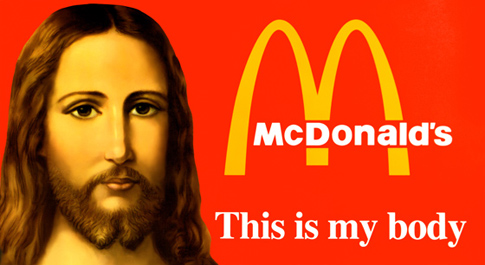
This is my body, 2002
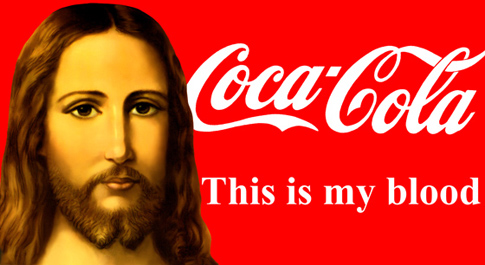
This is my blood, 2002
In the works This is my body and This is my blood by the SozArt artist Alexander Kosolapov, the standardised representation of Christ becomes a brand and the Eucharist an advertising message by Coca-Cola and McDonalds. One of the fundamental questions in capitalism relates to what unites consumers – Kosolapov's works gives one answer to it: religion. Both works are an ironic commentary on consumer culture, where products become fetishes and advertising becomes the Bible. Kosolapov combines Christian elements with the graphic language of commercial advertising and in this way draws attention to the parallels between the communication of religion and advertising strategies.
Alexander Kosolapov, * 1943 in Moscow (former UDSSR), lives and works in New York (USA)
 Alexander Kosolapov, This is my body, 2002 Alexander Kosolapov, This is my body, 2002
lightbox, 82 x 150 cm
courtesy Guelman Gallery
VG Bild-Kunst, Bonn 2008
Alexander Kosolapov, This is my blood, 2002
lightbox, 82 x 150 cm
courtesy Guelman Gallery
VG Bild-Kunst, Bonn 2008
|
|



